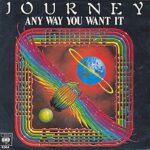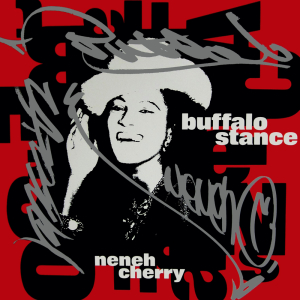 There’s a reason certain rock songs feel timeless, endlessly re-energizing no matter how many times they blast from a speaker, jukebox, stadium PA, or road-trip playlist. Journey’s “Any Way You Want It,” released in 1980 on their album Departure, is one of those rare tracks that manages to sound like a celebration every single time it plays. It’s packed with the joy and optimism that defined a certain era of rock, but it’s also a song that cuts across generations, becoming a staple of parties, films, sports events, and karaoke stages for more than four decades.
There’s a reason certain rock songs feel timeless, endlessly re-energizing no matter how many times they blast from a speaker, jukebox, stadium PA, or road-trip playlist. Journey’s “Any Way You Want It,” released in 1980 on their album Departure, is one of those rare tracks that manages to sound like a celebration every single time it plays. It’s packed with the joy and optimism that defined a certain era of rock, but it’s also a song that cuts across generations, becoming a staple of parties, films, sports events, and karaoke stages for more than four decades.
At its core, the track captures everything that made Journey special at the turn of the decade: the soaring vocals of Steve Perry, the electrifying guitar work of Neal Schon, and the tight musicianship that gave their arena-rock sound such polish. But “Any Way You Want It” wasn’t just another radio-friendly single—its creation was part of a new shift in how the band approached songwriting and performance. Inspired by their time touring with Irish rock legends Thin Lizzy, Journey started leaning into more rhythm-driven structures, trading some of their earlier prog-rock tendencies for sharper hooks and more dynamic layering. The result was a song that sounded both effortless and meticulously crafted.
The track’s infectious spirit is undeniable from the opening chords. It grabs listeners immediately and never lets up, even as the band cycles through shifting rhythms and vocal refrains designed to keep the energy level sky-high. “Any Way You Want It” wasn’t just a hit in 1980; it became one of Journey’s defining musical statements—and it remains one of the clearest examples of how arena rock could be both big and personal at the same time.
A Hook Designed to Move You
The reason “Any Way You Want It” feels so instantly satisfying is because its hook is built to hit you in the chest. From the first guitar stabs, Neal Schon delivers a bright, cutting tone that sets the stage for everything that follows. The riff isn’t overly complex, but it’s crafted to feel propulsive, a perfect lead-in to Steve Perry’s vocal fireworks.
Perry enters with total command, his voice crisp, confident, and effortlessly high. His melodic choices create a call-and-response feel with the guitar, giving the song a natural bounce that continues through the entire track. When he hits the main chorus—“Any way you want it, that’s the way you need it”—it becomes impossible not to sing along. The phrasing, the repetition, the pulse behind it—they all lock together to produce a chorus that feels like pure adrenaline.
The band understood the power of simplicity in songwriting. Rather than overcomplicate things, they let the momentum build naturally, giving every instrumental part just enough space to shine without cluttering the mix.
A Rhythm Section Inspired by Thin Lizzy
One of the coolest parts of the story behind “Any Way You Want It” is how it came to be. During Journey’s late-1970s tours, they spent time with Thin Lizzy, whose twin-guitar and percussive style left a major impression on the band. It was during these tours that Journey began experimenting with new rhythm structures—structures that ultimately shaped the sound of “Any Way You Want It.”
Bassist Ross Valory and drummer Steve Smith lay down a groove that is lively, tight, and constantly in motion. Smith uses rapid cymbal work and sharp, syncopated drum strikes to drive the song forward, while Valory’s bass line dances around the guitar riffs with a cheerful looseness. This interplay makes the track feel bouncy without ever losing its power.
The rhythm section gives the song its stamina. Even without vocals or guitar, you could still identify the track from its underlying movement—that’s how distinctive it is.
Neal Schon’s Guitar: Flashy, Fun, and Full of Spark
Schon’s guitar work on “Any Way You Want It” captures a specific kind of joyful intensity. His playing doesn’t lean on heavy distortion or dramatic theatrics; instead, it sparkles with clarity. The riffs are bright, the chords ring cleanly, and the solo is a burst of melodic fire that perfectly complements Perry’s vocal presence.
Schon has always been a high-level technician, but what makes his playing great here is how playful it feels. His short fills and flourishes add zest without overwhelming the structure, enhancing the song’s energy rather than dominating it.
The guitar solo is especially memorable. It doesn’t try to reinvent the wheel—it just rips, delivering a melodic line that sticks in your head long after the final chorus fades. Far from being a shredder moment, it’s a reminder of how effective a well-crafted solo can be in the context of a pop-friendly rock song.
Steve Perry’s Vocal Signature
By 1980, Steve Perry had already established himself as one of rock’s great frontmen, but “Any Way You Want It” cemented his reputation. His voice is electrifying from the first line, gliding effortlessly across octaves with both power and agility.
What stands out most is how he balances clarity and grit. Perry’s high notes are big without being overwhelming, and his mid-range is warm enough to give the verses a conversational tone. He also knows when to hold back, when to push, and when to stack harmonies for maximum effect.
Perry’s delivery is so strong that the track would still be catchy if it were performed a cappella. He brings charisma, brightness, and a sense of absolute freedom—the feeling that the song is a celebration, not just a performance.
Production That Amplifies Energy
The production on “Any Way You Want It” is crisp and polished, which is part of why the track still sounds so fresh decades later. Producer Kevin Elson and the band leaned into clarity rather than density. Every instrumental part has room to breathe, and the mixing ensures that nothing gets lost.
The layered backing vocals add texture, the guitar lines pop without overpowering, and the drums cut through with a clean punch. It’s the kind of production that rewards repeat listening—you can focus on different elements each time and discover new small details in the arrangement.
Even the structure of the song is smart. It runs lean at just under three and a half minutes, never overstaying its welcome. Each verse pushes smoothly into the chorus, the bridge elevates the dynamics, and the ending hits with maximum enthusiasm. It’s a masterclass in radio-ready rock production.
A Song That Became a Cultural Fixture
“Any Way You Want It” didn’t just perform well in 1980—it became part of American pop culture. Its placement in films like Caddyshack, TV commercials, sports arenas, and countless playlists has kept it alive across generations. It’s one of those songs that instantly changes the mood of a room.
Part of that lasting appeal is its pure positivity. Unlike many rock songs of the era that leaned into darker themes, this one feels exuberant. It’s a song about freedom, spontaneity, and joy. The title phrase itself sounds like an invitation: choose your own path, shake off the heaviness, and live your life.
That open-ended message is a big reason why the song still resonates with younger listeners discovering Journey for the first time.
A Defining Moment in Journey’s Evolution
“Any Way You Want It” wasn’t just a hit—it marked a shift that influenced the rest of Journey’s career. The band began leaning more heavily into upbeat, hook-driven rock songs, a direction that helped pave the way for their later successes, including Escape in 1981 and its legendary anthem “Don’t Stop Believin’.”
This track captures the transitional moment between the band’s earlier experimentation and their arena-rock peak. It’s the sound of a group discovering a new gear—one that would carry them to global stardom.
Why It Still Works
Decades after its release, “Any Way You Want It” remains one of the most joyful rock songs ever recorded. Its appeal is simple but powerful:
-
A chorus you can’t forget
-
A riff that energizes instantly
-
A rhythm section that keeps everything bouncing
-
Steve Perry at the height of his powers
-
Clean, punchy production that survives any era
It’s the kind of track that reaches across generations and genres, making people smile even if they’re not hardcore Journey fans.
In 1980, the song was a bright burst of optimism in a changing rock landscape. Today, it’s a reminder of how liberating a great anthem can feel—an energetic, feel-good classic that still invites listeners to turn it up, let go, and enjoy the moment any way they want it.


